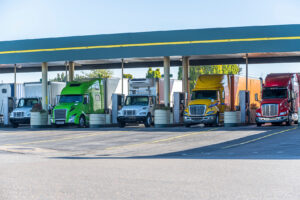
Cut Fleet Costs and Empower Drivers: The Power of the Owner-Operator Model
Cut Fleet Costs and Empower Drivers: The Power of the Owner-Operator Model It’s no surprise that the current economic climate
Transport Canada has unveiled their new electronic logging devices rules. These rules are meant to order the ELDs as they are coming in place of the paper logbooks that have been used for a long time. To avoid speculation, there are 10 important things you need to know about the ELD mandate and the new rules coming into effect.
The rules that were initially drafted stated that there will be a four-year rollout plan. However, the regulators have now dismissed a grandfather policy for the electronic recording devices. With the help of suppliers, Transport Canada decided that the older machinery doesn’t have to rely on a software upgrade when updating.
Here, the existing hours will remain as they are since their establishment. However, the hours will be monitored through electronic methods. According to a few numbers of drivers and fleets, the paper logbooks have room to make few changes. However, it is not official that the logs can change.
25% of the convictions were recorded for exceeding hours whereas 11% were either for working the logs simultaneously or giving out false information. According to Canada Transport, about 48% of convictions failed to maintain their logs as well as not giving out a daily log as they should. After a truck crashed into a team bus with members of the Humboldt Broncos hockey team, attention was brought to the hours of service violations. The driver of Adesh Deol trucking, Jaskirat Singh Sidhu, did not have all the logs for most days in the previous 14 days. There was no record of times and locations when duty status changed. Therefore, there were lots of fabricated entries in the log. This led to the fleet owner, Sukhmander Singh being charged with lack of driver’s log maintenance and numerous log entries for one period.
Federally regulated commercial drivers are the ones who will be affected by the new rules. They are about 157,426 and are required to uphold a paper logbook. This is due to the fact that they work past the 160-km radial distance of their home terminal. Regulators in the provincial areas and their territories will comply with the rules of the provincial and interprovincial operation.
The rules will not apply to rental equipment with less than 30 days. Also, the ELDs will not work on trucks with an older model like that which was manufactured before the year 2000. In the case of ELD malfunction, drivers will note down the daily log on paper. The papers will thus be valid up to 14 days or when returned to the home terminal.
ELDs are hoped to lead to reduced crashes, detention time for hours of service violations and administrative time. The industry’s savings is estimated at $380.33 million. This is unlike the $299 million with major factors like buying and installing devices and training cost as well as monthly tracking services.
About 47% of federally regulated commercial vehicles have ELDs.
Automatic records will be driving time, engine power-up, and odometer readings. Manual entries are things like fueling time on duty, loading, and unloading.
But with local data, you have an option to transfer via USB 2.0 or Bluetooth.
We hope this list contained at least some of the information you needed to help you prepare for the time when the ELD mandate comes into full effect.

Cut Fleet Costs and Empower Drivers: The Power of the Owner-Operator Model It’s no surprise that the current economic climate

Ways to optimize truck driving fuel efficiency As the Canadian trucking industry continues to play a vital role in the

Ways to Improve Fuel Economy Your number one expense as an owner-operator is fuel. And with diesel prices hitting record